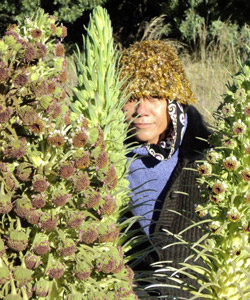Council Member Profiles
Former Reserve Advisory Council member profile

Tammy Harp
2001 – 2019
"We need marine protected areas to ensure our future generations will have the resource for their survival in an uncertain world. "
– Tammy Harp
Q: What drew you to participate in the NWHI Coral Reef Ecosystem Reserve Advisory Council?
A: (I was) concerned with the plight of the endemic Hawaiian monk seal. At the time, the Hawaiian monk seal wasn’t faring well, and the commercial crustacean/lobster fishery was having an impact on (their) survival.
Q: What are your personal thoughts on the place and why it deserves such dedicated protection?
A: In the main Hawaiian Islands, we refer to the ocean as our “icebox”. To me, the Northwestern Hawaiian Islands is our “freezer”. There is a symbiotic relationship and connection between the NWHI and the main Hawaiian Islands in replenishing our fish stocks, namely pelagic and bottom fish.
Q: What do you see as the RACs greatest achievement(s) during the time you were directly involved?
A: Creation of the NWHI Native Hawaiian Cultural Working Group, the Mokupapapa Discovery Center (MDC), the Papahanaumokuakea Marine National Monument (PMNM), World Heritage Site mixed designation, and the Office of Hawaiian Affairs (OHA) as a co-manager of the monument.
Q: As a member of the council, what are your most memorable experiences?
A: Having had the opportunity to know and work long-term alongside four special kupuna elders: Tutu Isabella Abbott, Uncle Buzzy Agard, Ante Laura Thompson, and Dr. Bill Gilmartin. (The) ability to share mana’o despite being challenged with the way Western science dominate our cosmology, traditional ecological knowledge as well as our spirituality. Being amongst colleagues from a wide range of disciplines whom shared their Aloha for the Northwestern Hawaiian Islands.
Q: What do you see as the biggest challenges facing the council and/or monument today?
A: Commercial fishing, exploratory deep-sea ocean mining, rising ocean levels, marine debris, tourism, and the survival of the Hawaiian monk seal in the Northwestern Hawaiian Islands.
Q: Anything else you would like to say about being a member of the council?
A: Mahalo to everyone who has and will continue to participate on the council, NOAA lead and staff members selflessly giving their time and manaʻo to ensure strong protections for the NWHI natural and cultural significance. Showing the importance of sane resource management and the importance of its Maoli people’s involvement in the co-managing of the Northwestern Hawaiian Islands.


